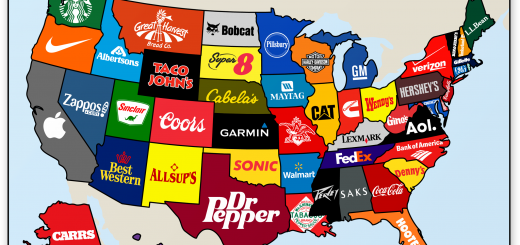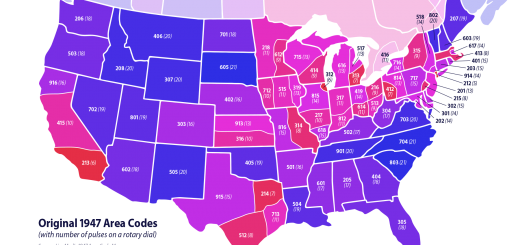The Ups and Downs of Teardown Houses
 Real estate is expensive in Dallas, so the trend is to replace small old houses with bigger, newer ones. These teardown houses are a controversial subject in the Metroplex. From a preservationist standpoint, they are a terrible blight destroying the architectural heritage of the city. But from an urban planning perspective, they are a good way to increase density and real estate values, making this suburban city more urban. So for people who are both urbanists and preservationists, it’s a difficult topic to grapple with.
Real estate is expensive in Dallas, so the trend is to replace small old houses with bigger, newer ones. These teardown houses are a controversial subject in the Metroplex. From a preservationist standpoint, they are a terrible blight destroying the architectural heritage of the city. But from an urban planning perspective, they are a good way to increase density and real estate values, making this suburban city more urban. So for people who are both urbanists and preservationists, it’s a difficult topic to grapple with.
Park Cities Teardowns
Driving along the tony streets of University Park, Texas, you see some of the best and worst things that teardown houses have to offer. It’s a mixture of 1950s ranch-style houses and modern “McMansions“. The difference between the two is often jarring. The old houses are low-slung and set back from the street, with big yards and big trees. Meanwhile the new houses take up as much of the lot as the zoning will allow. They have tiny lawns and newly planted trees. Architecturally, they don’t match the neighboring houses, since each one is built by a different owner at a different time. This can be a good and a bad thing.
McMansions and Modernism
Most teardown houses have a similar design: a sort of big and showy suburban pastiche. Most of these monstrosities look vaguely Tuscan, though some are vaguely Georgian or Tudor. These houses feature a lot of stone and brick on the front, with cheaper stucco and vinyl siding on the less visible parts of the house. These type of McMansions are a preservationist’s worst nightmare, and show the downside of teardown construction. But they are far from universal.
Many of the new houses being built are done by architects who give a damn. Driving around town, I love seeing the new mid-Century modern houses, which somehow look more retro than the period houses they replace. Venture into the truly richie-rich lands of Highland Park or Preston Hollow, and you’ll find true mansions as well, built with high quality materials. But truth be told, billionaires’ houses don’t fascinate me. I’m more interested in the architectural heritage of the city as a whole.
Lakewood Condos
Teardown houses don’t just affect rich neighborhoods. You can also find them in (upper) middle class parts of town like the M-Streets and my neighborhood of Lakewood. These middle class teardowns tend to be a little more utilitarian, with less steep gables and stone facades. They tend to be more boxy, resembling older Foursquares and Victorian houses. (Though they still have a bit of that McMansion aesthetic). In the less expensive neighborhoods, a lot of the new houses are duplexes or even apartment/condominium blocks. This is especially true on my street. Here you’ll find pre-World-War brick houses mixed in with blocks of condos and townhouses. It always gives me mixed feelings driving down the street. Some of those old houses are pretty nice, but the new condo blocks are nice-looking buildings that increase the neighborhood density overall. It really is a mix of bad and good.
The Ethics of Gentrification
This is a topic for another day, but I don’t think you can discuss teardowns without talking about the ethics of gentrification. Building these new houses forces out the older, and usually poorer, population. You can see this in University Park where little ranch style houses give way to mansions three times their size. You can see it in my neighborhood, where newer, more upscale condos blocks push out the old single-family homes. Most of all, you can see it in Uptown Dallas. This part of town is very dense, built with the New Urbanism in mind, but it replaced the African American neighborhood known as Freedman’s Town. I love the architecture of Uptown, but I always try to remember the human cost of teardowns. One man’s ghetto is another man’s home.
In the end, I have to come down, however reluctantly, on the pro-teardown side. There’s simply no other way to grow a city like Dallas. There is plenty of land here in Texas, but like Los Angeles and other car-dependent cities, it’s going to have to start growing up, rather than out. I just hope we can preserve our history, both architectural and cultural, for future generations.








4 Responses
[…] the fortress became a city, and the city outgrew its medieval walls. There was soon a rush to tear down the walls expand the metropolis. This expansion, or eixample as it’s called in Catalan, was […]
[…] allow for increased river traffic. Once the new bridge was completed, the old Medieval Bridge was demolished. (Despite what the song says, it did not fall down.) The new bridge was an immediate success, but […]
[…] suburbs. In fact, I actively dislike them. To me the suburbs are inefficient, with huge tracts of McMansions squeezed between sprawling parking lots and Big Box stores. But I don’t want to go off on a […]
[…] While I’ve lived in Dallas for almost a decade, I’ve only been to Denton on a handful of occasions. Denton is a medium-sized city an hour north of Dallas and Fort Worth. It’s a big college town, home to both North Texas University and Texas Women’s University. Unlike Dallas, Denton hasn’t completely razed all its cool old buildings. […]